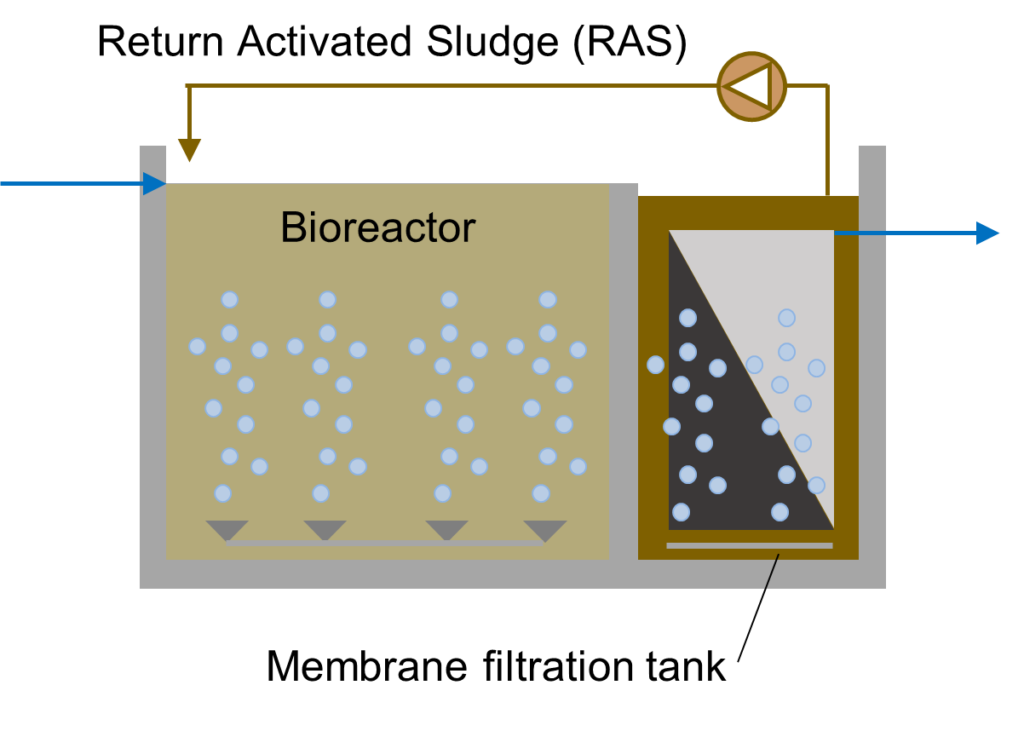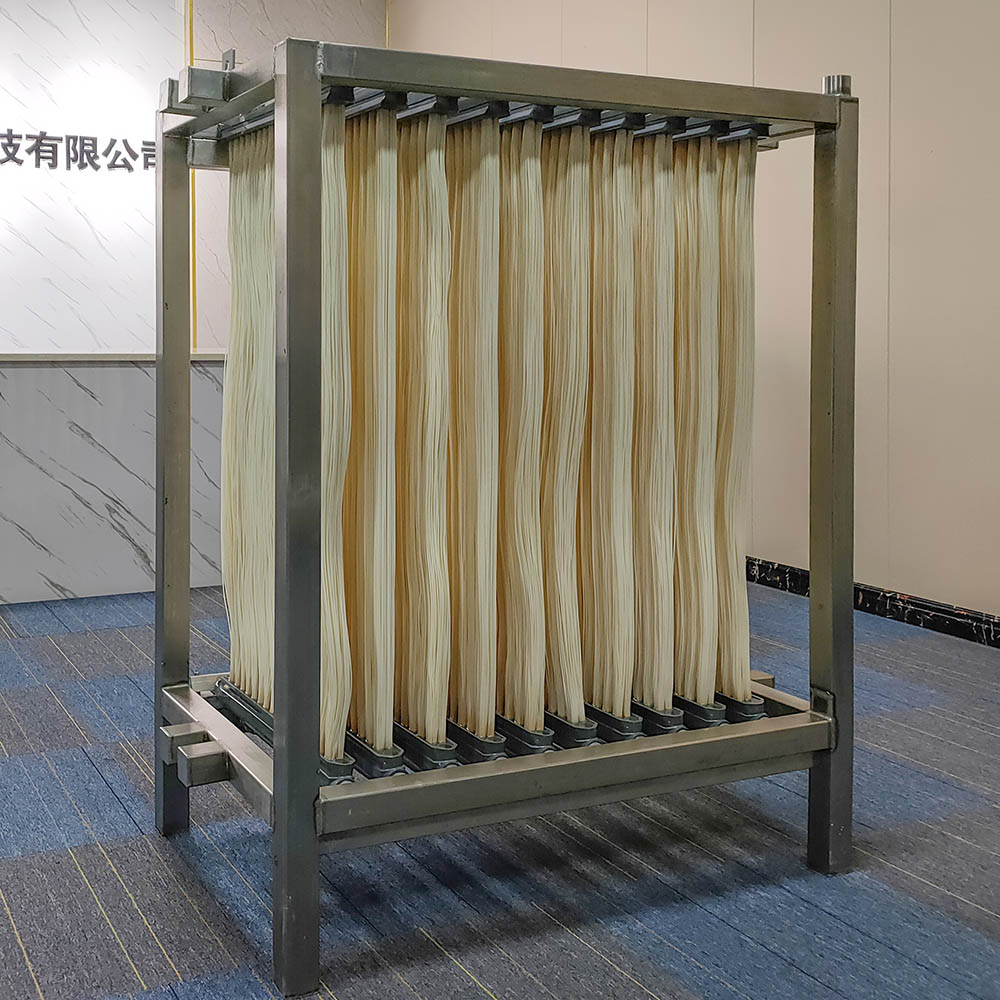Troubleshooting Common Issues with Membrane Bioreactor Systems
Wiki Article
Membrane Layer Bioreactors Described: Reliable Solutions for Clean Water
Membrane bioreactors (MBRs) have actually become an advanced remedy for addressing the pushing obstacles of wastewater treatment. By integrating biological procedures with innovative membrane layer filtration, MBRs not just improve the high quality of cured water however additionally decrease the spatial requirements of treatment facilities. As environmental issues increase, the duty of MBR technology in promoting sustainable water administration comes to be increasingly substantial. The complexities of their procedure, advantages, and prospective applications warrant a closer evaluation to completely comprehend their influence on the future of water therapy.
What Are Membrane Bioreactors?
Membrane bioreactors (MBRs) are advanced wastewater therapy systems that integrate biological destruction procedures with membrane filtration innovation. This integration enables the reliable elimination of impurities from water, making MBRs a favored choice in numerous applications, consisting of local wastewater treatment and commercial effluent monitoring.
Among the important advantages of MBRs is their capacity to create top quality effluent, often appropriate for reuse in irrigation or commercial procedures. Furthermore, MBRs call for a smaller impact compared to standard therapy systems, making them suitable for urban setups where room may be restricted.
Furthermore, MBRs can properly deal with varying influent lots and are less at risk to the effects of harmful shocks. These qualities add to their growing popularity as a sustainable option for attending to the raising demand for clean water while decreasing ecological impacts.
Exactly How Membrane Layer Bioreactors Work
While the procedure of membrane layer bioreactors (MBRs) may seem complicated, it fundamentally focuses on the harmony in between organic processes and membrane layer filtration. MBRs integrate a biological treatment procedure, typically activated sludge, with a membrane layer splitting up unit to treat wastewater effectively.In an MBR system, wastewater is initial introduced into a bioreactor where microbes weaken natural issue and various other impurities. The biological activity minimizes the focus of toxins while advertising the development of biomass. Following this organic treatment, the mixed liquor is subjected to membrane layer filtering, which can be microfiltration or ultrafiltration, relying on the wanted effluent quality.
The membranes serve as a physical obstacle, allowing water and little solutes to pass while preserving put on hold solids and bigger particles. This enables the system to maintain a high focus of biomass within the activator, enhancing the treatment performance.
Moreover, the continuous separation of treated water from the biomass promotes a portable layout and minimizes the impact of the therapy center. Generally, the mix of organic destruction and membrane purification in MBRs results in reliable and effective wastewater therapy, making certain high-grade effluent ideal for different applications.
Benefits of MBR Innovation
One of the vital advantages of membrane bioreactor (MBR) modern technology is its capability to produce high-quality effluent with a substantially minimized footprint contrasted to traditional wastewater treatment techniques. MBR systems effectively incorporate biological therapy and membrane filtration, causing exceptional removal of contaminants, consisting of suspended solids, virus, and raw material. This ability results in effluent that commonly satisfies or exceeds rigid regulatory requirements for reuse and discharge.Furthermore, MBR technology enables higher biomass concentrations, which enhances the therapy efficiency and minimizes the required reactor volume. This small layout is particularly advantageous in urban areas where area is limited. The operational versatility of MBR systems also implies they can adjust to differing influent high qualities and circulation rates, making them suitable for a vast array of applications.
In addition, the reduced sludge production related to MBR procedures adds to lower operational and upkeep prices. The membrane layers function as a physical barrier, lessening the threat of blocking and enabling longer operational periods between cleaning. Generally, the benefits of MBR modern technology make it an attractive service for sustainable wastewater therapy, resolving both ecological problems and the need for effective resource administration.
Applications of Membrane Bioreactors
With their adaptability and performance, membrane bioreactors (MBRs) locate applications across different fields, consisting of metropolitan wastewater treatment, commercial procedures, and even water improvement. In metropolitan settings, MBRs provide a compact solution for dealing with wastewater, effectively removing contaminants while simultaneously producing high-grade effluent that satisfies strict regulatory standards. This makes them especially ideal for areas with limited room.In industrial applications, MBR innovation is made use of for dealing with process water, particularly in sectors such as food and drink, pharmaceuticals, and petrochemicals. These sectors take advantage of MBRs' capability to handle high natural tons visit this web-site and their efficiency in recuperating important sources from wastewater, such as nutrients and water.
In addition, MBRs play a vital function in water reclamation campaigns, allowing the reuse of dealt with wastewater for watering, industrial procedures, or even as drinkable water after more treatment (Membrane Bioreactor). Their additional hints performance in eliminating toxins and microorganisms makes them a trustworthy option for making certain water high quality in various reuse applications
Future of Water Therapy Solutions
The future of water therapy remedies is positioned for transformative advancements driven by technical innovation and boosting environmental awareness. As worldwide water deficiency becomes a pushing problem, brand-new methodologies, consisting of membrane bioreactor (MBR) systems, are readied to play an essential duty in enhancing the performance and sustainability of water treatment processes.Arising technologies such as artificial knowledge and artificial intelligence are anticipated to enhance therapy procedures, permitting real-time surveillance and predictive upkeep. This will certainly boost the total dependability and performance of water therapy centers. Innovations in membrane layer materials, such as graphene and nanofiltration, guarantee to boost permeation prices and minimize fouling, leading to reduced power usage and go functional expenses.
In addition, the assimilation of renewable resource sources into water therapy plants will contribute to greener practices. The round economic situation model will certainly additionally obtain grip, motivating the healing of beneficial sources from wastewater, such as nutrients and energy.
Conclusion

Membrane bioreactors (MBRs) have actually emerged as a sophisticated solution for resolving the pressing challenges of wastewater therapy. By integrating organic processes with sophisticated membrane layer filtering, MBRs not only improve the quality of treated water yet additionally minimize the spatial demands of therapy facilities.One of the key advantages of membrane layer bioreactor (MBR) technology is its capacity to produce top quality effluent with a dramatically decreased impact contrasted to standard wastewater therapy approaches.With their flexibility and effectiveness, membrane layer bioreactors (MBRs) locate applications across various fields, consisting of metropolitan wastewater treatment, commercial procedures, and even water recovery.In verdict, membrane bioreactors represent a significant innovation in wastewater treatment innovation, integrating organic processes with reliable membrane layer filtration to produce premium effluent.
Report this wiki page